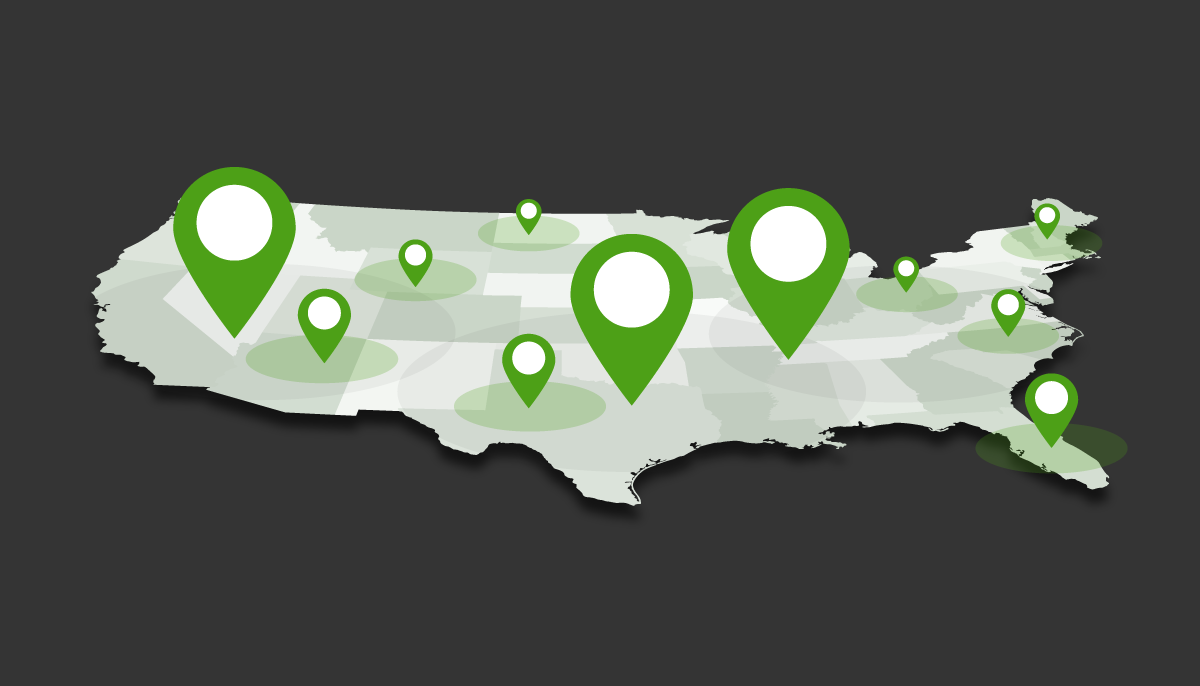
Building Out Your Multi-Node Fulfillment Network
In this dynamic and uncertain market, brands face the challenge of figuring out how to get closer to customers. As consumer expectations evolve, creating a multi-node fulfillment network is mission-critical in today’s retail climate. When it comes to where you set up a distribution center (DC), as in real estate, it’s all about location, location, location.
We recently opened a second West Coast DC in Las Vegas. Its ideal location provides easy access for drivers and is within 20 miles of the airport. We chose this region after eliminating other areas based on land costs, the type of workforce in place and proximity to ground and air transportation. We originally setup operations in a pre-existing facility because of the online shopping boom during the pandemic and quickly outgrew that space.
Building from the ground up, we were able to design the layout to optimize eCommerce fulfillment with a mix of a stations for pick, pack and ship solutions. Now we have some 150,000 square-feet of wide-open space to not only personalize packages for our customers, but to enrich the experience for our employees as well. In this tight labor market, keeping employees happy is crucial.
Multi-node fulfillment network: A tactical approach
Brands need to meet customers where they are, and today’s consumers want options. This includes buy online, pick up in store (BOPIS), ship from store, curbside pickup and more. Sales for eCommerce were $870 billion in the U.S. last year – up more than 14% from 2020 and more than 50% over 2019. With brands selling products on multiple sites and the desire for reliable shipping, the single-DC strategy is a thing of the past.
The key question is – how do we get orders out the door and into the hands of customers as soon as possible? Brands are no longer beholden to a single hub and are getting creative about how they meet consumer demand. For instance, the SkinCeuticals brand under L’Oréal USA had a loyalty redemption program that needed a fulfillment provider. Customers had redeemed points for merchandise, but the company did not have a viable order fulfillment solution for the orders. The answer was a pop-up DC. With minimal set-up time and utilizing corporate staff, we completed and shipped the orders in one day. You can learn more about the pop-up DC concept from our eBook, Pop-ups to the Rescue.
Having the agility to utilize a smaller format, when needed, will pay off. Retailers are using their stores as well as traditional and non-traditional fulfillment space to support multi-node fulfillment operations. To do this effectively, they need complete visibility of all inventory across omnichannel operations – stores, DCs, etc. Then they can determine the best multi-node strategy for their business – maybe that is operating multiple locations 12 months out of the year, only during peak season, or any other mix. Leveraging distributed order management (DOM) technology to route orders to alternative facilities for fulfillment, brands can keep track of where SKUs are located and how much is available for sale at each location. .
When brands can diversify their direct-to-consumer (DTC) operations, they are in a better position to navigate disruptions such as supply chain bottlenecks, weather issues, labor shortages and transportation costs.
The genesis of eCommerce
In the aftermath of the pandemic, consumers are more tech savvy and the bar for customer expectations continues to be set higher. In the past, if it took 10 days or more to receive an order, consumers might have been okay with it. Those days are long gone. Brands are expected to communicate with customers effectively about when their package is going to arrive and make good on that promise.
Brands want to be able to leverage experience, infrastructure and location to meet consumer demand. So how do they get inventory closer to consumers? More and more brands are outsourcing their geographic expansion to broaden their reach, increase the speed of delivery and boost customer satisfaction.
Partnering with a third-party logistics provider (3PL) can help brands manage their fulfillment network more efficiently – enabling them to provide a reliable experience for their customers from the moment an order is placed to when the package arrives at the doorstep.
Customer X-factor
With customer loyalty so closely linked to the consumer appetite for on-demand shopping, speed and accuracy are essential. A quality 3PL partner understands consumer expectations for shopping timelines, and they work with their carrier partners large and small to get the product to the customer within the indicated timeframe. According to Fresh Relevance’s 2022 data pulse, a third of U.S. consumers will switch retailers if items are out of stock, and nearly 40% will switch brands or products.
But customer satisfaction goes beyond shipping timelines. There’s a tangible experience to opening an aesthetically-pleasing package. A skilled 3PL works to capture the essence of a brand in its packaging and understands how that kind of attention to detail can be a differentiator. Another way to gain a competitive edge is through sustainable fulfillment practices and the multi-node strategy is enabling brands to reduce their carbon footprint by shortening last-mile delivery.
When outsourcing, it’s important to pick a provider that can scale to perform during your busiest time. A 3PL offers experience, scalable infrastructure and a diversified fulfillment network that all work together to ensure the success of your critical peak season.
Customer satisfaction is more important than ever in this uncertain market and partnering with a 3PL to manage your multi-node fulfillment network through the pick, pack, and ship process can help brands deliver a memorable customer experience that will breed loyal customers.
Having the support of a 3PL allows brands to free up in-house resources to focus on what they do best – product development, marketing and concentrating on their customers. And then their 3PL partner delivers on those promises.


